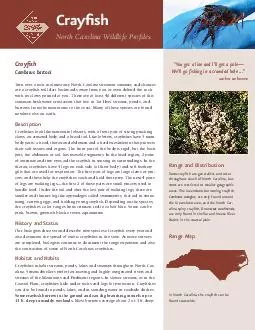PDF-Craysh Cambarus bartoni Turn over a rock in almost any North Carolina stream in summer
Author : pasty-toler | Published Date : 2015-03-12
There are at least 40 different species of this common freshwater crustacean that live in Tar Heel streams ponds and bur rows from the mountains to the coast Many
Presentation Embed Code
Download Presentation
Download Presentation The PPT/PDF document "Craysh Cambarus bartoni Turn over a rock..." is the property of its rightful owner. Permission is granted to download and print the materials on this website for personal, non-commercial use only, and to display it on your personal computer provided you do not modify the materials and that you retain all copyright notices contained in the materials. By downloading content from our website, you accept the terms of this agreement.
Craysh Cambarus bartoni Turn over a rock in almost any North Carolina stream in summer: Transcript
Download Rules Of Document
"Craysh Cambarus bartoni Turn over a rock in almost any North Carolina stream in summer"The content belongs to its owner. You may download and print it for personal use, without modification, and keep all copyright notices. By downloading, you agree to these terms.
Related Documents














